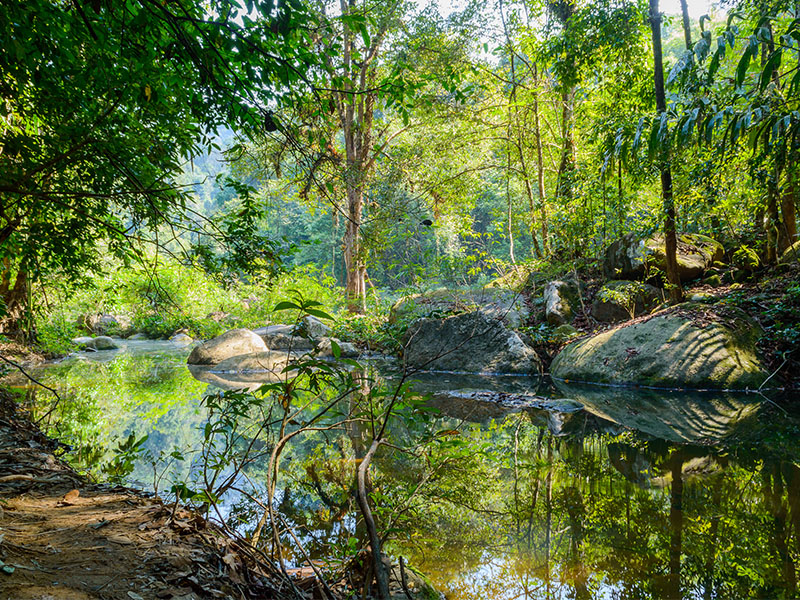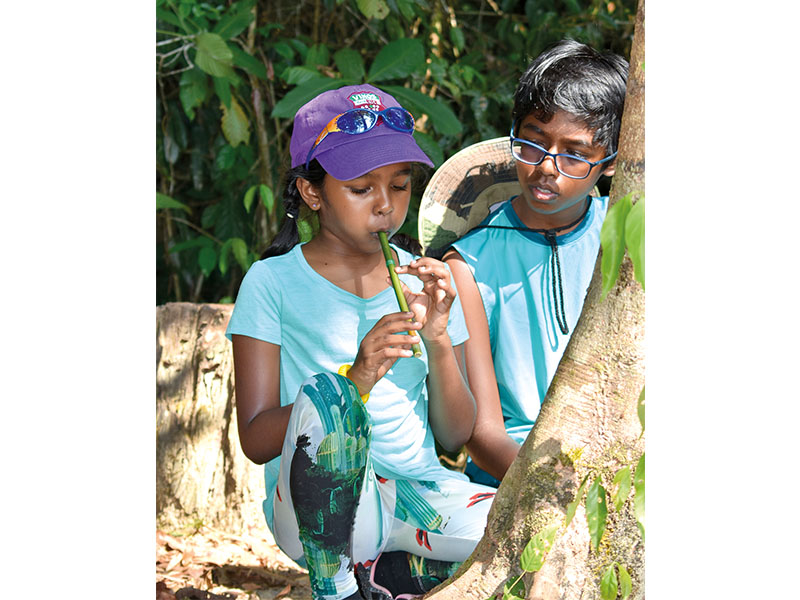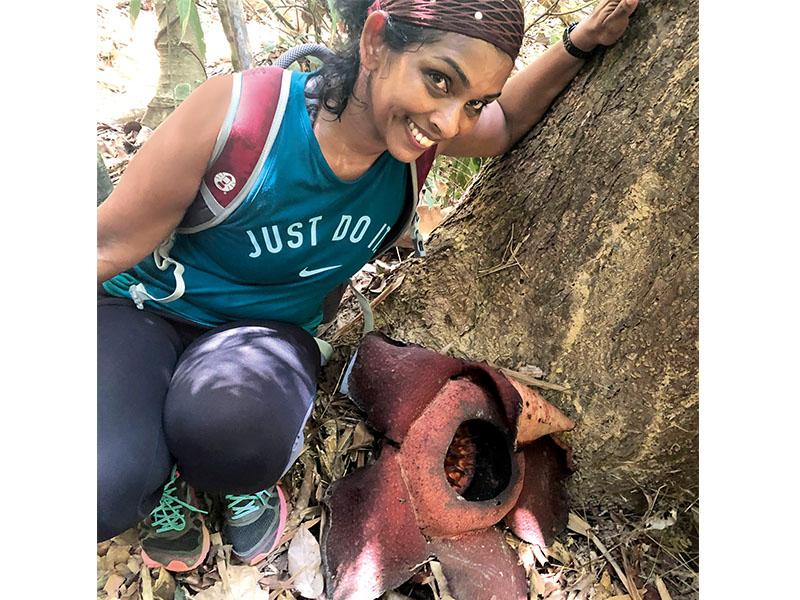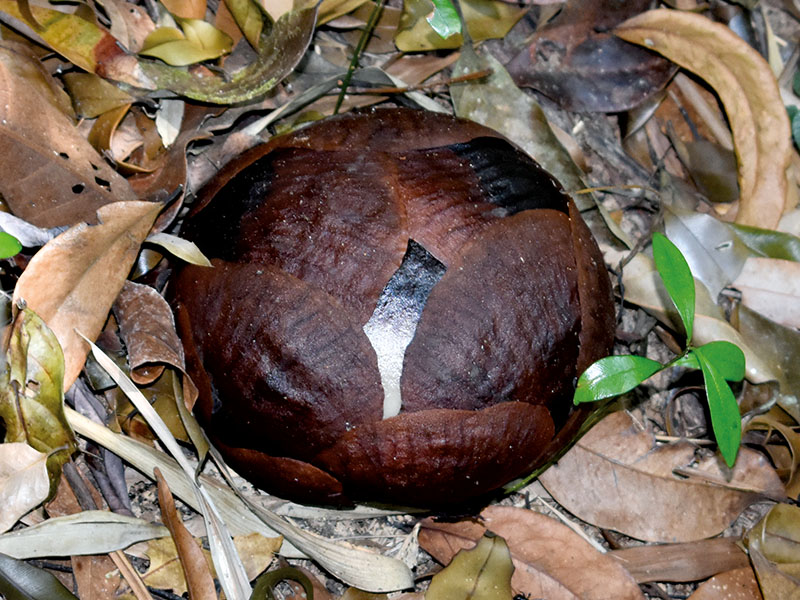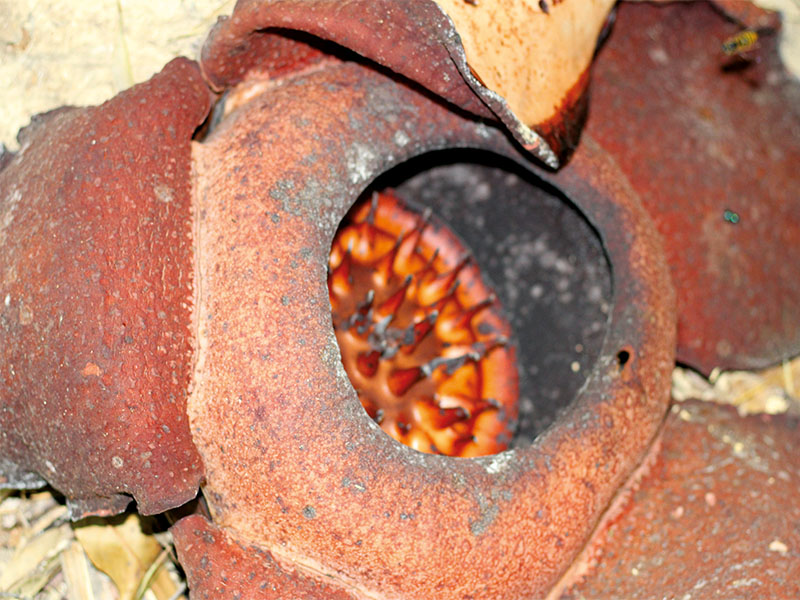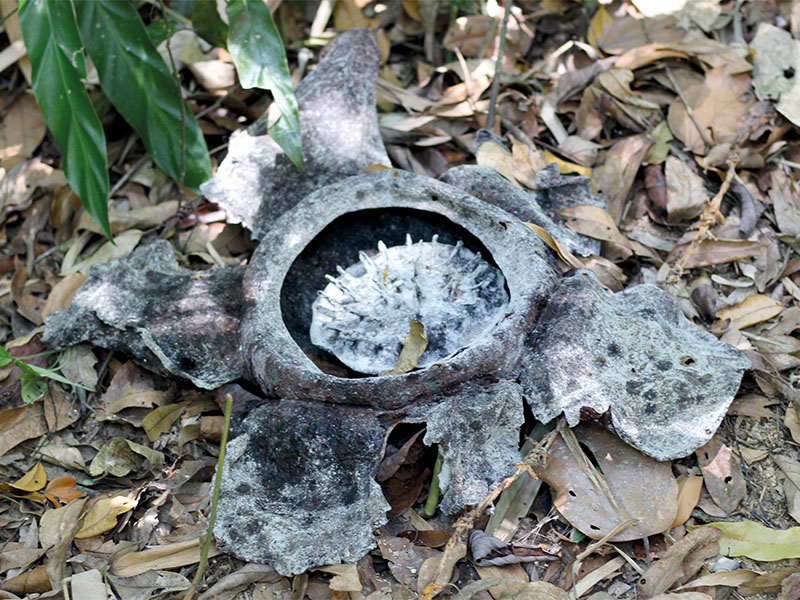Some of us travel to explore a different culture; others to get rest and relaxation. SHIMAALI FERNANDO GOMEZ took a trip to Thailand with the express purpose of seeing a single type of flower.
The Rafflesia was named after Sir Stamford Raffles, the founder of Singapore, following its discovery on an expedition he led in Borneo in 1818. This rare and exotic flower, known to be the world’s largest, blooms for only three to five days a year, and primarily during the dry season months of January through March. The chances of seeing one are not great.
So why would I decide to put that on the agenda for our spring break? Just call me the crazy mother who had to try. Worst case, it would be a challenging hike that my family could say they did to humour me.
The flower blooms in various parts of Southeast Asia, including Borneo, but that was not where I chose for us to try and see it. Instead, I opted for Khao Sok National Park in Thailand. Located amongst karst mountains that formed an ancient coral reef some 250 million years ago, Khao Sok boasts dense rainforest and is home to a range of different animals. The idea of hiking in its jungles intrigued me. The question was, would we be fortunate enough to see a Rafflesia in its full glory?
Surrounded by jungle
The famous flower blooms at higher, cooler altitudes. Our hike would involve a four-to-five-hour round trip, and from the very start we were climbing uphill using spidery roots as stairs. We soon reached a clearing where we took in the view of the valley below us – rubber trees swaying gently in the wind, drifts of clouds floating past gigantic limestone formations and dense jungle all around.
Our guide stopped, took out a rather impressive pocket knife and cut a piece of bamboo that was growing nearby. He deftly sliced through part of it, pulled out some twine and coiled it around another part.
“Here,” he said, handing it to the nine-year-old. “You can play it for the monkeys.”
She had her very own bamboo flute. She blew it insistently for a while, until I took it from her so as not to interrupt the sounds of the jungle.
Animal encounters
Thankfully, it didn’t deter a family of gibbons that we chanced upon as we continued on our hike. Our guide assured us that this was a happy and rare encounter. Even he was fascinated as the animals called to each other and swung high in the canopy above us. Where was my long-range zoom lens when I needed it? I also wondered why I’d forgotten to pack a pair of binoculars, particularly when a flying lizard whizzed by us a few times in an effort to mock our lack of speed.
We trekked on steadily, continuing up the hill. We climbed over and sometimes under branches, trunks and other bits of forestry that lay across our very humble path. I was glad we had a guide with us, as no guidebook or trail map would have helped on this trail. The kids spotted an elephant insect or “planthopper” and a large cicada, and our guide showed us a termite home. He broke a piece off the home to show us the lightning-fast building skills of termites; two-and-a-half hours later, on our descent, we noted with awe how right he was.
But I digress. We were on a hunt for a rare and elusive flower.
A little too late?
We climbed higher. The temperature was now distinctly cooler. The jungle seemed to grow denser, until a clearing of sorts came into view. And then we saw it: a Rafflesia bud on a vine. Not its own vine, but a “host”; the flower is parasitical – and only one specific type of vine (Tetrastigma, a relative of the grapevine) serves as the host.
We walked on and discovered our first full-sized flowers, but they had already bloomed and were now in a state of decay. My heart fell. We were a few days late; we were walking into a graveyard of rotting flowers with a pungent smell. Around these almost burnt-looking flowers were more buds on their host vine, waiting to bloom.
The strong odour has been responsible for some of the nicknames given to Rafflesia such as “corpse flower” and “meat flower”. The smell attracts flies, which transport pollen from male to female flowers.
“Flower goes ‘boom boom’ when it comes out at night,” said our guide, illustrating to us in his limited English how each of the Rafflesia’s five petals releases to reveal the huge centre of the flower.
“Can we come back at night to see this boom boom?” the nine-year-old inquired. The guide’s eyes widened and he motioned to us to walk deeper into the jungle.
New blooms
The pungency of the smell intensified. There, nestled against a tree root, was another flower – only, this one had bloomed as recently as two days ago. It still had the red hue on its leather-like petals. We went closer, observing the flies and bees buzzing in and around its very large central disk.
I asked the children to get even closer so I could take a photo that is best described as a bad meme. This is not an easy object to photograph, given that there are tiny insects flying all over, buds sprouting nearby and a whole host of forest variables to contend with.
We did push on a little further to see if we could find a Rafflesia that had opened only the night before, but alas, it was not to be. Still, seeing the buds, the two-day-old flower and the others in various states of decay was definitely worth the long hike.
Khao Sok National Park is a three-hour drive from Krabi and Phuket, and two hours from Surathani. See khaosok.com for more information.
Stages of the Rafflesia Flower
Like this? Read more in our Travel section.
Margaret River: A family adventure!
Travel news: places to stay and play
Recommendations: Holidays in Australia
This article first appeared in the August 2019 edition of Expat Living. You can purchase a copy or subscribe so you never miss an issue!
Don't miss out on the latest events, news and
competitions by signing up to our newsletter!
By signing up, you'll receive our weekly newsletter and offers which you can update or unsubscribe to anytime.

